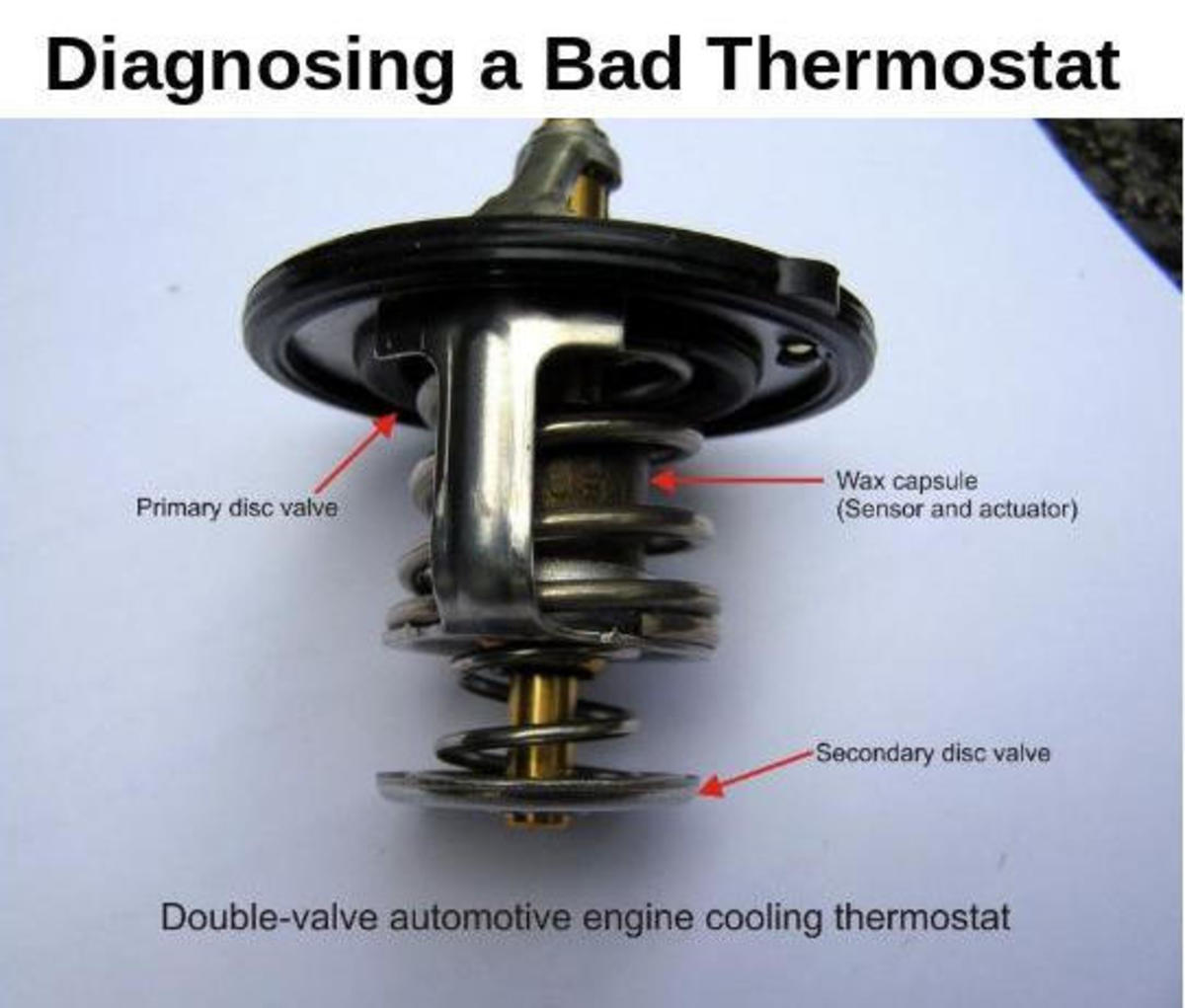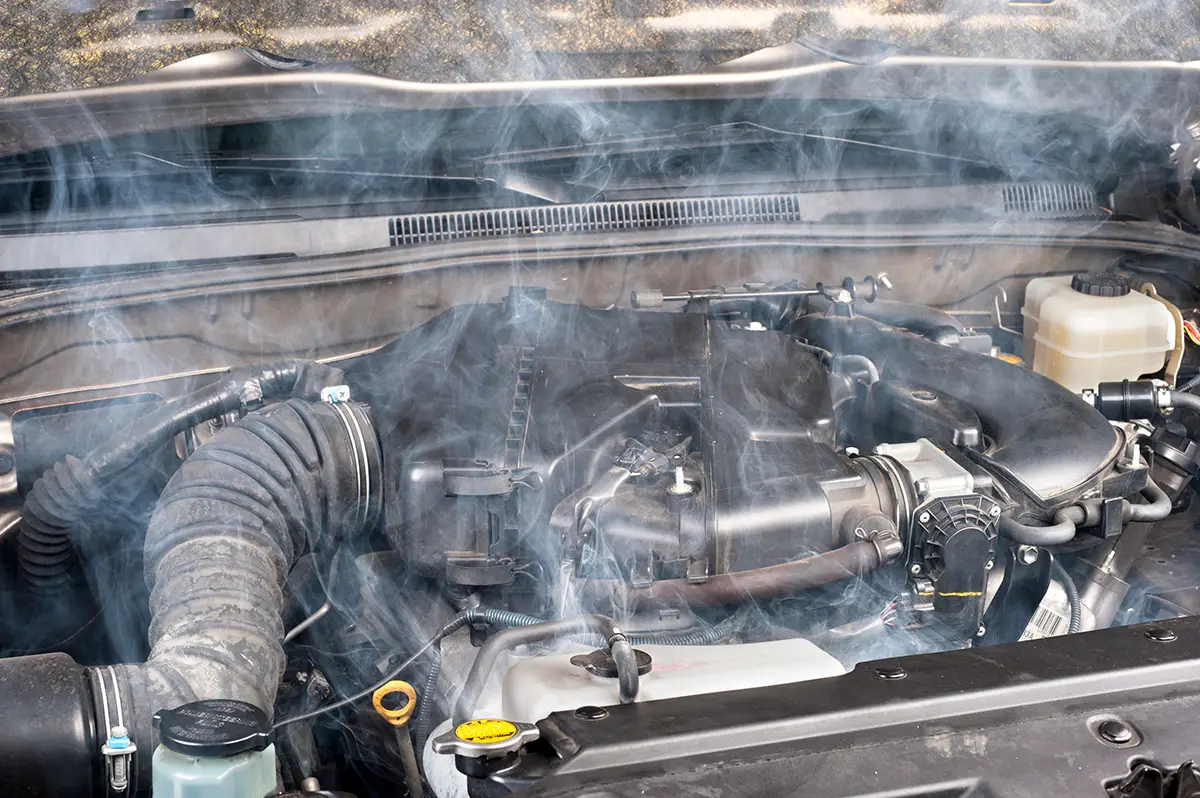Check Best Thermostat Pricing in Amazon
** As an Amazon Associate, I earn from qualifying purchases.
Have you ever found yourself puzzled by your car’s coolant levels dropping mysteriously? You’re not alone.
Many car owners face this frustrating issue, and while there could be several culprits, one often-overlooked suspect is the thermostat. Can a bad thermostat really cause coolant loss? It’s a question that can keep you up at night, wondering if your vehicle is at risk of overheating.
Understanding the role of the thermostat is crucial, as it not only affects engine performance but also your safety on the road. Stick around, because what you discover here might just save your engine from serious damage and save you from unexpected repair costs.

Credit: www.reddit.com
Signs Of A Bad Thermostat
Understanding the signs of a bad thermostat is vital for car health. A faulty thermostat can cause serious issues, including coolant loss. Recognizing these signs early can prevent costly repairs and ensure your vehicle runs smoothly.
Temperature Fluctuations
Notice erratic temperature readings on your dashboard? This might indicate thermostat issues. A malfunctioning thermostat struggles to regulate engine temperature. It swings between hot and cold unexpectedly. Normal driving conditions should maintain a steady temperature. Sudden changes could be a red flag.
Engine Overheating
Engine overheating is a common sign of a bad thermostat. The thermostat controls the flow of coolant. If stuck, it can block coolant circulation. This leads to engine overheating. The temperature gauge rising above normal is alarming. An overheated engine risks severe damage. Addressing thermostat problems promptly can save your engine.
How The Thermostat Works
The thermostat is a small but crucial component in your car’s engine. It regulates the flow of coolant. This helps keep the engine at the right temperature. Understanding how it works is key to grasping its role in coolant loss.
Role In Engine Cooling
The thermostat plays a vital role in engine cooling. It sits between the engine and the radiator. When the engine is cold, the thermostat stays closed. This prevents coolant from flowing to the radiator. Once the engine heats up, the thermostat opens. It allows coolant to circulate and cool the engine. This process prevents overheating. It also ensures the engine runs efficiently.
Interaction With Coolant System
The thermostat’s interaction with the coolant system is essential. When open, it allows coolant to travel through the engine. The coolant absorbs heat and moves it to the radiator. There, the heat is released into the air. This cycle keeps the engine from overheating. A faulty thermostat can disrupt this cycle. It may cause the coolant to overflow or leak.
Causes Of Coolant Loss
Coolant loss can lead to engine overheating. Understanding its causes is crucial. A bad thermostat might be one reason. But, there are other factors to consider. Each can affect your vehicle’s performance.
Leaks And Evaporation
Leaks are common causes of coolant loss. They can occur in hoses, the radiator, or the water pump. Even a small leak can lead to a significant coolant drop. Evaporation can also result in coolant loss. This happens when the coolant reservoir cap is not sealed properly. Heat from the engine speeds up evaporation.
Cooling System Failures
Cooling system failures can cause coolant loss. A malfunctioning radiator is a typical example. It might not distribute coolant efficiently. Sometimes, a faulty head gasket can let coolant mix with engine oil. This not only reduces coolant but also harms the engine. Another potential issue is a broken heater core. It can lead to internal leaks, causing coolant levels to drop.

Credit: www.reddit.com
Thermostat’s Impact On Coolant Levels
The thermostat in your car plays a crucial role in regulating engine temperature by controlling the flow of coolant. But can a faulty thermostat lead to coolant loss? The answer is yes, and understanding how is essential for maintaining your vehicle’s health. A malfunctioning thermostat can disrupt the coolant levels in various ways, leading to overheating and engine damage.
Restricting Coolant Flow
A bad thermostat can restrict the flow of coolant, causing it to stay trapped in the engine. This may result in the coolant overheating and evaporating, effectively reducing the coolant levels over time. Have you ever noticed your temperature gauge fluctuating wildly? That could be a sign your thermostat is stuck closed, preventing adequate coolant circulation. Regularly checking your thermostat function can prevent this issue.
Causing Overpressure
Another problem with a faulty thermostat is that it can cause overpressure in the cooling system. This happens when the thermostat doesn’t open at the right time, leading to pressure build-up. High pressure can force coolant out through the overflow tank or even cause a leak in the radiator. Have you found puddles of coolant under your car? It might be more than just a leak; your thermostat could be the culprit.
Regular maintenance and paying attention to warning signs can save you from costly repairs. If your car’s engine is running hotter than usual, or if you notice an unexpected drop in coolant levels, it might be time to check that thermostat. Ensuring it operates correctly not only safeguards the coolant levels but also prolongs the life of your engine.
Diagnosing A Faulty Thermostat
A faulty thermostat can lead to coolant loss. It may cause overheating or improper engine cooling. Diagnosing a bad thermostat is crucial for maintaining your vehicle’s health. A few simple tests can reveal if the thermostat is malfunctioning.
Testing Procedures
Start by checking the thermostat’s temperature. Use a thermometer to measure the engine’s heat. Compare the readings with the vehicle manual. If the temperature is off, the thermostat might be failing. Another test involves removing the thermostat. Place it in hot water. Watch if it opens. A working thermostat should open at the right temperature.
Check Best Thermostat Pricing in Amazon
** As an Amazon Associate, I earn from qualifying purchases.
Visual Inspection
Inspect the thermostat housing for leaks. Look for any coolant around the area. Leaks indicate a faulty seal. Check the thermostat’s condition. Look for rust or corrosion. These signs mean the thermostat might not function well. Examine the connection points. Ensure they are tight and secure.

Credit: discover.hubpages.com
Preventive Measures
Preventing coolant loss is crucial for car health. A bad thermostat can lead to leaks and engine damage. Simple preventive actions help ensure your vehicle stays in top shape. Regular checks and timely replacements are key. Maintain your car’s cooling system to avoid costly repairs.
Regular Maintenance
Regular maintenance keeps your cooling system running smoothly. Inspect the thermostat periodically. Check for signs of wear or damage. Look for any leaks around the thermostat housing. Ensure the coolant level is adequate. Clean the area to prevent dirt buildup. A clean system performs better and lasts longer.
Timely Replacements
Replace the thermostat if it’s faulty. A bad thermostat can cause overheating. Overheating may lead to coolant loss. Choose a high-quality replacement part. Follow the manufacturer’s guidelines for installation. Regularly review the thermostat’s performance. Ensure it opens and closes correctly. Timely replacements help avoid unexpected breakdowns.
When To Seek Professional Help
You’ve noticed your car is losing coolant, and you’re wondering if a bad thermostat could be the culprit. It’s crucial to know when to seek professional help to prevent further damage to your vehicle. If the issue persists despite your efforts, it’s time to consult a mechanic who can diagnose and fix the problem effectively.
Recognizing Severe Symptoms
Are you seeing puddles of coolant under your car? Or perhaps your engine is overheating frequently? These are severe symptoms that shouldn’t be ignored. Driving with an overheating engine is risky and can lead to expensive repairs.
Have you ever felt the panic of watching your temperature gauge rise while stuck in traffic? It’s a clear sign that professional intervention is needed. Addressing these symptoms early can save you from more severe issues.
Professional Diagnosis
Professional mechanics have the tools and expertise to accurately diagnose thermostat issues. They use specialized equipment that can pinpoint the exact cause of coolant loss. It’s not always easy to identify these issues on your own, especially if you’re not familiar with car engines.
Imagine the relief of having a trained expert confirm the root of the problem. It not only saves you time but also gives you peace of mind knowing your car is in capable hands. If you’re unsure of the cause, don’t hesitate to reach out for professional help.
Is ignoring the problem worth the risk of damaging your car? A simple check-up can prevent costly repairs and ensure your vehicle runs smoothly. Don’t wait until it’s too late; seek professional guidance when necessary.
Frequently Asked Questions
Can A Bad Thermostat Cause Your Car To Lose Coolant?
Yes, a bad thermostat can cause coolant loss. It may lead to overheating, pushing coolant out. Regular checks prevent issues. Ensure the thermostat functions correctly to avoid leaks. Proper maintenance keeps your car’s cooling system efficient and prevents unnecessary coolant loss.
Why Am I Losing Coolant But No Coolant Leaks?
Coolant loss without visible leaks might indicate a blown head gasket, internal engine issues, or a faulty radiator cap. Conduct regular maintenance and inspections to catch these problems early. Prioritize checking the engine block, hoses, and cooling system to ensure optimal vehicle performance.
What Are The Symptoms Of A Bad Failing Thermostat?
A failing thermostat often causes overheating or underheating. You may notice fluctuating temperature readings. Poor fuel efficiency and engine performance can also be signs. Coolant leaks and unusual sounds from the engine area are other indicators. Address these issues promptly to avoid further damage.
Does A Thermostat Control Coolant?
A thermostat controls the flow of engine coolant, maintaining optimal operating temperature. It opens and closes to regulate coolant passage. This ensures the engine neither overheats nor runs too cold, promoting efficiency and longevity. Proper thermostat function is crucial for engine performance.
Conclusion
A bad thermostat can indeed cause coolant loss. It may lead to overheating, which increases pressure. This pressure forces coolant out, reducing its level. Regular checks of your thermostat are crucial. Identifying issues early can prevent coolant loss. Always monitor your engine’s temperature gauge.
It helps catch problems before they worsen. Regular maintenance keeps your cooling system healthy. If you notice coolant loss, check the thermostat. It’s a simple step that saves time and money. Remember, a well-functioning thermostat keeps your engine running smoothly.
Take care of it, and it will take care of your car.
Check Best Thermostat Pricing in Amazon
** As an Amazon Associate, I earn from qualifying purchases.


